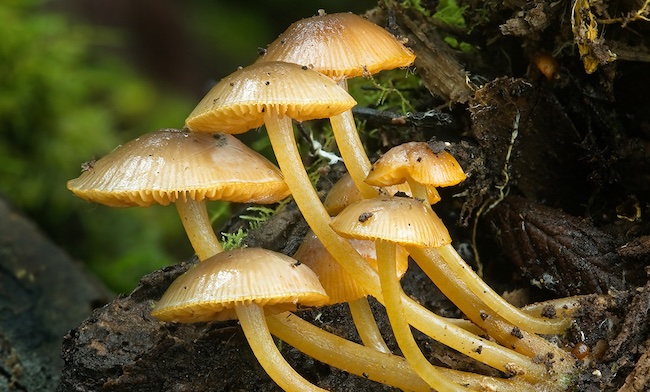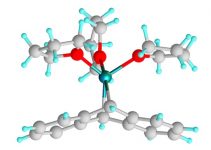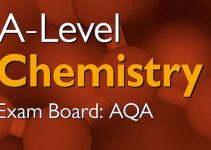Whether you’re an aspiring mycologist or a student in any of the health or basic science fields that require a course on mycology, you will need the most in-depth information on the specialty to scale through. While there are many books that discuss in detail everything you need to know about fungi, fungal infection, and cover many more areas of the topic only a few are easy to understand and promote retention.

Best Mycology Textbooks: Our Top 6 Picks
We have checked through several mycology textbooks available on the market, and we have figured out the best ones that will deliver the results you want.
1. Medical Mycology: A Self-Instructional Text
For the beginning mycologist looking for a simple textbook that explains all the concepts of mycology in detail using an easy-to-understand approach and text, Medical Mycology: A Self Instructional Text is a great option to go for.
The text discusses all the concepts of mycology including the general and specific characteristics, cultivation, and identification of medically important fungi. The book is presented in seven modules featuring a structure that promotes self-directed study and classroom instruction. You will find pre-requisites, content outline, objectives as well as follow-activities that will help you gain a better understanding of the information you just consumed. You will also find sections that provide you with a guide for self-study examinations.
The beginning modules of the book cover the fundamentals of terminology as well as laboratory procedures that the reader, student, or mycologist should master before turning the pages to the main part of the book.
Each chapter is divided into sections; The first details information on laboratory-clinical identification of organisms while the second section contains theoretical principles that would improve the reader’s effectiveness in day-to-day laboratory work.
This book also marries other aspects of mycology. It presents the biology and physiology of fungi, defines fungal disease states, and describes the epidemiology of fungal infections.
The latest edition comes with new updates that are considered a plus. You will find several sections detailing common techniques for fungal culture preservation, antifungal therapeutics, and DNA testing for rapid identification.
Though this book seems a bit too compact with just over 200 pages of text, it does make for a great place to start learning about mycology.
- Authors: Martha E. Kern MD DA MLS(ASCP) CLS(NC), Kathleen S. Blevins PhD MLS(ASCP) CLS(NCA)
- Publisher: F.A. Davis Company
- Current edition: Second edition (January 1997)
- Pages: 242 pages
2. Introductory Mycology
For a more in-depth look into the biology of fungi, Introductory Mycology is the right textbook to have on your desk. The book starts out with the introduction to the Fungi and their significance to humans and then dives down to the characteristics of fungi. You will also find a comprehensive guide on the many Phylum of Fungi as well as their classes.
This latest edition offers a more updated text with a well-documented, logical, and clear explanation of the structure and classification of the fungi. Several pages in the book will introduce you to physiological, biochemical, genetic, and ecological data.
The book also follows a taxonomic approach that gives you an organized identification system of the various types of fungi. Within its pages, are illustrations and life cycle drawings that help you identify the most important fungi.
For students and mycologists that would have a hard time understanding the terminologies used in the book, the material offers a glossary that explains the most complex terms. This should help you easily grasp the information the book is trying to pass on.
Introductory Mycology comes over 800 pages long. It is not the biggest book on the subject and surely not the most extensive, however, it does provide all the necessary details with illustrations and diagrams to support every point. It should help you with every information you need if you’re looking for a more in-depth guide to Mycology.
- Author: C. W. Mims C. J. Alexopoulos, M. Blackwell
- Publisher: Wiley
- Current edition: 4th edition (January 2007)
- Pages: 880 pages
3. Fungal Biology
For a book that delivers a comprehensive view of fungi and their importance to the human condition in a compact size, Fungal Biology is the right text to have. The book covers all major areas of fungal biology as well as provides insight into many topical areas that are usually left out by many mycology textbooks. You will find relevant information of areas such as fungal ultrastructure, the important fungal metabolites, mechanisms of fungal growth, and the molecular techniques used to study fungal populations.
The first chapter explains fungi and fungal activities. As you go through the pages, you will come to find topics like the diversity of fungi, differentiation and development, and fungal nutrition. The middle chapters deal with fungal genetics, fungal spores, and move to fungal interactions with humans and the environment. You get to learn about fungal parasites, fungi as plant pathogens as well as the principles of controlling fungal growth. The book doesn’t dive deep into any laboratory practices but gives you a comprehensive look at fungi in all aspects.
The information the material provides can be used as a basis for projects as they are based on actual research. The book is also updated to reflect recent research and provide knowledge on modern fungi biology.
While this book is great in many ways, it does pose a problem for those that have never held a book on mycology before. The text and the use of terminologies might be too technical for some undergraduate students as well as young students.
- Author: J. W. Deacon
- Publisher: Wiley-Blackwell
- Current edition: 4th edition (July 2005)
- Pages: 380 pages
4. The Illustrated Dictionary of Mycology
Authored by Miguel Ulloa and Richard T. Hanlin, the Illustrated Dictionary of Mycology is an up-to-date compendium of mycological knowledge that breaks down mycological terms to their simplest forms enabling readers to understand all the technical aspects and nomenclature used in the field of mycology.
This book makes use of a simplistic approach that makes the subject easy to grasp as well as communicate with colleagues. The latest edition features a complete list of 2,700 scientific names and color illustrations of the fungi mentioned through the material. This gives you a visual guide that allows you to identify the organism and its features. You will also find 672 color drawings in the book to help improve visual learning and promote a better understanding of mycological terms. The book is easy to read and use making it great for not just students but also plant scientists of all levels.
With over 700 pages of information, this book doesn’t count as the biggest but it is extensive enough to brush you up on the basics and advanced information on mycology. Its illustrations and depictions make it one of the most comprehensive dictionaries on plant pathogenic fungi.
- Author: Miguel Ulloa and Richard T. Hanlin
- Publisher: Amer Phytopathological Society
- Current edition: 2nd edition (March 2012)
- Pages: 784 pages
5. 21st Century Guidebook to Fungi
The mysterious world of fungi is laid bare in the 21st Century Guidebook to Fungi which gives you an extensive view of the kingdom of fungi. The book covers all the scopes of fungi including ecology and evolution, diversity and taxonomy, cell biology and biochemistry, biotechnology and biochemistry, and lastly, genetics.
Rather than pouring out all the available information and terminologies, this book adopts a simplistic approach – using explanatory figures and color illustration to allow for quick learning. Within the book, the authors outlined the recent advances in molecular techniques and computational biology and how they fundamentally changed the understanding of fungal biology.
For aspiring mycologists at both undergraduate and graduate levels, this book will act as a reliable guide to all aspects of mycology. However, you should take note that some mycology terms used in some sections might be out of place for the beginner reader.
- Authors: David Moore, Geoffrey D. Robson, Anthony P. J. Trinci
- Publisher: Cambridge University Press
- Current edition: 2nd edition (June 2020)
- Pages: 610 pages
6. Color Atlas of Mycology
For pathologists and medical technologists, most textbooks won’t do. Some are not in-depth enough and others don’t carry enough pictures to help with the identification of fungi. Many more do not fall in line with the latest laboratory procedures or make use of the most recent taxonomic classifications. If you’ve been let down by books like this, then the Color Atlas of Mycology offers you everything you’ve been missing.
This text features more than 15 years of proficiency testing data to address conceptual classification issues. This guide is the most comprehensive and complete reference you will ever come across. It merges Vitro mycology with Vivo mycology which provides more content than regular mycology textbooks.
Within its pages are information on culturing of clinical specimens for fungi, identification methods for fungi, taxonomy, colonial and microscopic morphology, and disease characteristics. You will also come across other aspects such as ecology, key differentiating features, and potential look-alikes that could prove helpful during laboratory work.
- Authors: FCAP Gordon L. Love, MD, D(ABMM) emeritus, FCAP Julie A. Ribes, MD, PhD
- Publisher: College of American Pathologists
- Current edition: (January 1, 2018)





